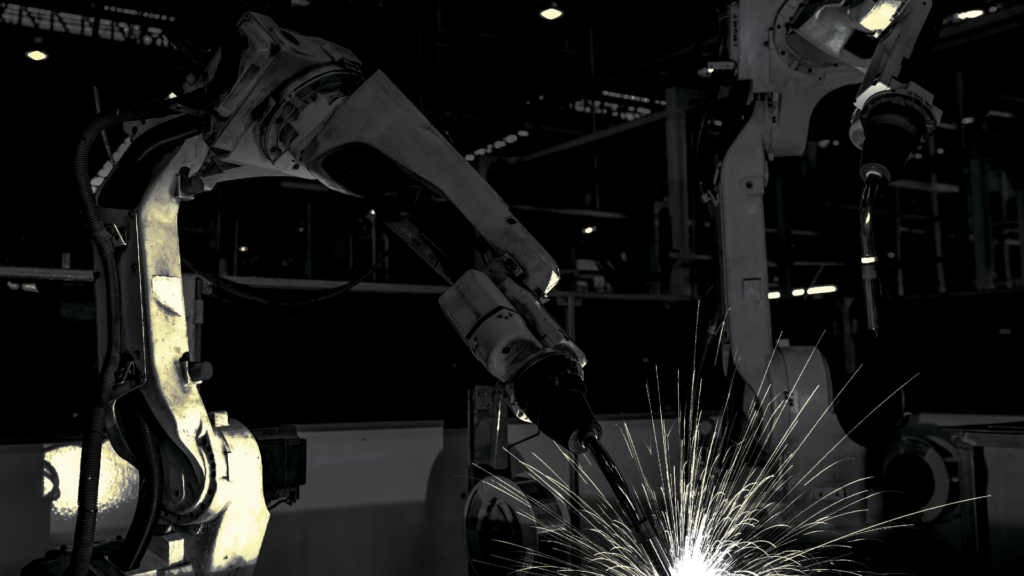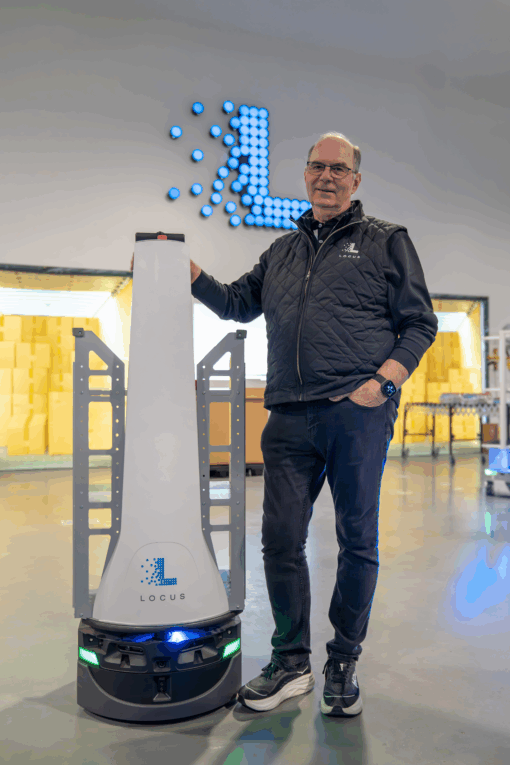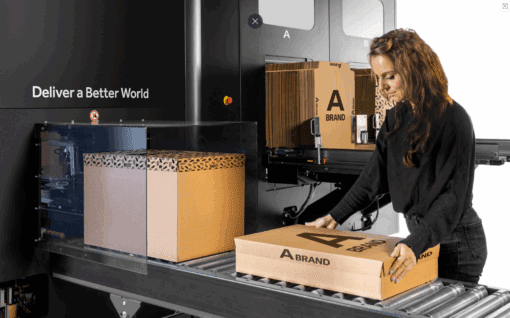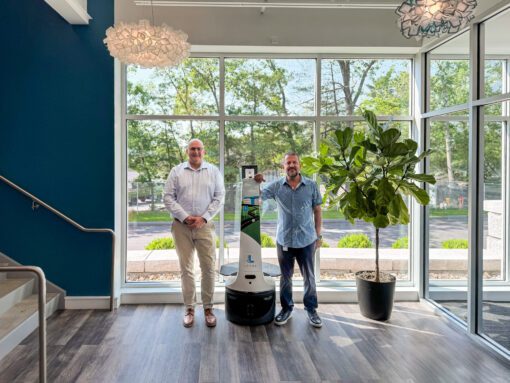WP: How to achieve 400 UPH with Locus Fast Pick
WP: How to achieve 400 UPH with Locus Fast Pick Download Now!
14 Trends Shaping the Future of Manufacturing in 2022
Jason Walker, VP, Market Development

Recent economic pressures and labor shortages have forced manufacturers and factories to become more flexible and efficient, but many don’t know where to start. Let’s look at the latest and greatest inventions, strategies, and systems that could help your facility stay competitive and thrive in 2022 and beyond.
14 Manufacturing Trends in 2022
- Accessible Automation
Automation is not entirely new in the manufacturing world, but there is now widespread adoption of the practice. New technologies that have made automation more accessible to manufacturers are changing the way companies operate. “Automation for all” is the next step in the industry.
Automation is made possible with easy-to-use robotics solutions, user-friendly Manufacturing Process Management (MPM) systems, and human-robot collaboration. With manufacturing automation, organizations are reducing costs, optimizing workflows, and increasing their bottom line.
- Mobile Robotics
According to the ABI Research 2022 Trend Report, a total of 45,000 collaborative robots (CoBots) and 452,000 mobile robots are expected to be shipped in 2022, a 65% and 51% increase from 2021.
One of the primary drivers of this manufacturing trend is autonomous mobile robots (AMRs). While robots used to mean ultra-sophisticated technology that required trained roboticists, new robotics technology is making automation attainable for companies of all sizes.
Locus Robotics is changing the landscape of manufacturing with RaaS, flexibility, and best-of-breed technology. Origin, Vector, and Max can navigate on their own; are powered by LocusOne, the industry's smartest warehouse orchestration platform; and optimize your operation in real time. Locus AMRs allow manufacturers of all sizes to deploy robots tailor-made for their applications.
- Internet of Things (IoT)
The Internet of Things helps manufacturers connect to and monitor the various components of their operations, gaining insight never before possible. This connectedness gives manufacturers valuable data that enable them to change, optimize, and improve every facet of their manufacturing process.
Using smart sensors and cloud connectivity powered by the internet, IoT is propelling the advancement of the industry. Companies are improving safety, saving money, streamlining manufacturing, and even creating new products with IoT capabilities.
- Enterprise Resource Planning (ERP)
Enterprise resource planning technology has been in the manufacturing industry for years but is gaining widespread usage with the availability of cloud-based SaaS options that are easy to deploy and more affordable for small businesses. ERP systems help manufacturers automate different areas of operations under one comprehensive system. This universal touchpoint then gives manufacturers the insight they need to oversee the entire manufacturing operation and make improvements and adjustments where needed.
- Universal Connectability
Technologies and innovations in the manufacturing space were traditionally billed as a one-size-fits-all solution. Your operations had to fit the mold of the technology, which limited manufacturers’ options and made certain capabilities unavailable to them. New manufacturing trends are seeing that balance flip.
What we are calling “universal connectability” is the idea that technologies are now being made to connect with any device or system. System-agnostic solutions can be fit to any manufacturing setup, as the device itself and its operating technology can work with a wide variety of operations. Essentially, technology and manufacturing advancements can now be tailor-made to your operations, without the cost of a fully custom solution.
- Industry 4.0
A term created to describe the current trend in manufacturing toward “smart factories,” Industry 4.0 is shorthand for the fourth industrial revolution. Many of the trends on this list contribute to and make Industry 4.0 possible.
The widespread adoption and understanding of the latest manufacturing tech – IoT, the cloud, advanced computers, robotics, and the human workforce – all work together to empower Industry 4.0. Companies looking to stay relevant, competitive, and thrive in the marketplace must take advantage of the technological advancements that have sparked the fourth revolution in the manufacturing industry.
- Artificial Intelligence (AI) and Machine Learning
Because companies have access to more data than ever before, tools that enable them to make the most of that data, like artificial intelligence and machine learning, are having a major impact on manufacturing. AI doesn’t mean walking, talking robots, but instead refers to a computer system’s ability to recognize trends and infer logical conclusions that can help manufacturers make data-driven decisions.
AI and machine learning can help improve many aspects of a manufacturing operation, such as:
- Inventory management
- Supply chain visibility
- Warehouse cost reduction
- Asset tracking
- Forecasting accuracy
- Transportation cost reduction
- And more
- Predictive Maintenance
Made possible by IoT, AI, and machine learning, predictive maintenance is helping manufacturers avoid downtime by catching issues before they arise.
Adding predictive maintenance technology to a manufacturing operation can save on both maintenance costs and downtime while extending the expected life of machinery. McKinsey & Company projects that predictive maintenance programs will reduce costs by about 20% for maintenance and cut unplanned machine outage by 50%.
- Supply Chain Technology
Overall supply chain operation is being impacted by advances in high mix, low volume (HMLV) manufacturing. Effectively managing the supply chain is vital for manufacturers looking to save on costs, while delivering products to customers when they want it, how they want it.
Manufacturing trends are seeing companies invest in technologies that touch every step of the manufacturing process; procurement, inventory, assembly, logistics, transportation, and sales are all impacted by new technologies. For example, adding sensors or barcodes to items allows companies to scan and track parts throughout the process, helping companies quickly see where improvement can be made.
- Mobile Manipulators
Think of mobile manipulators as the marriage of a robotic arm and an AMR, essentially a fully mobile, self-navigating robot arm that can perform a variety of operations. Robotic arms were traditionally stationary automation tools, helping manufacturers in just one step of the assembly process. But with new-found mobility, they are being used to automate other key areas of manufacturing and can be optimized for collaboration with the human workforce (more on this later).
- Additive Manufacturing
This is the official industry term for what is better known as 3D printing. Using computer-aided-design (CAD) software, manufacturers can now custom build parts and products one layer at a time for their customers. Don’t just assume that additive manufacturing is making entire, complete products – this process is also ideal for creating models, prototypes, molds, lost-wax castings, or components of final, finished products.
Additive manufacturing is a fast-growing trend in the industry as it is first and foremost a significant time and cost-saving tool. We are seeing this manufacturing trend growing at an accelerating rate, especially in the metal fabrication industry and among manufacturers who build with metal components. New selective laser sintering (SLS) technology for 3D printing metals enables companies to build metal products in-house and realize significant cost savings by eliminating tooling costs and dramatically shortening product development time. Most exciting is that 3D printing enables cost effective mass production of metal parts that were previously impossible to make.
- Collaborative Robots (CoBots)
The addition of robotics and automation to the manufacturing industry has sparked concerns about possible negative impact on the workforce. What manufacturing trends are showing is just the opposite – robots and people working together, collaboratively, in factories and warehouses can get more work done, faster and more safely.
Known as CoBots, robots are built for the human workforce to use as a valuable tool that helps improve overall efficiency in the workplace. Consider them as your associate’s “ideal co-worker”. AMRs are uniquely tailored to this working partnership, as they can be programmed to consistently perform non-value-added work, like moving heavy products, while people focus on skilled labor.
- Automated Picking
Speaking of CoBots, one of the most common uses of CoBot systems in a logistics setting is for picking. In traditional order fulfillment roles, the physical act of walking to pick product accounts for 50% of the entire process, eating up valuable time and money.
Automated picking is achieved when a robot is used to travel throughout the warehouse grabbing the correct product, leaving people to do more skillful work in the fulfillment process. These advances in manufacturing and logistics are improving efficiency – where a human worker could pick between 60 and 80 orders an hour, an automated system can pick up to 300 in the same time frame, according to Westernacher Consulting.
- Workforce Attraction, Retention, and Training
It is no secret in manufacturing that companies struggle to find skilled, qualified employees. There is even a workforce shortage in the industry, and Deloitte has projected that nearly half of the 4.6 million manufacturing jobs that will be needed over the next 10 years will not be filled. That’s 2.3 million open positions.
We believe manufacturing should focus on empowering the workforce to attract good talent and keep them on the job. How do you achieve that? You empower them to do valuable work and minimize the physically and mentally demanding tasks.
One way to do this is to have workers currently on the floor put automation tools like robots to work. When workers can easily master the technology, they will expand their skill set and work collaboratively with the technology to streamline processes and reduce backbreaking, repetitive tasks. Locus AMRs not only make workers more efficient, but they help to improve the workplace with less effort needed to do more work, less walking, reduced physical effort overall, improved safety, lower fatigue, and more.
In the manufacturing industry, and in all industries, technology and automated processes help facilities improve their employee retention, increase their picking time, and use machine learning to improve their processes. Interested in hearing how the Locus Robotics solution can help your facility?
About the Author
Jason has over 20 years of robotics leadership roles that range from managing QA and testing for iRobot’s Roomba to co-founding CyPhy Works, a revolutionary tethered drone company. Most recently, Jason was Co-founder and CEO of Waypoint Robotics, a leading provider of heavy payload capacity, omnidirectional AMRs, that was acquired by Locus in 2021. Jason is a life-long roboticist and has won many awards, accolades, and patents for various robot-related technologies. Jason is using his vast knowledge and experience to propel Locus into new opportunities.




